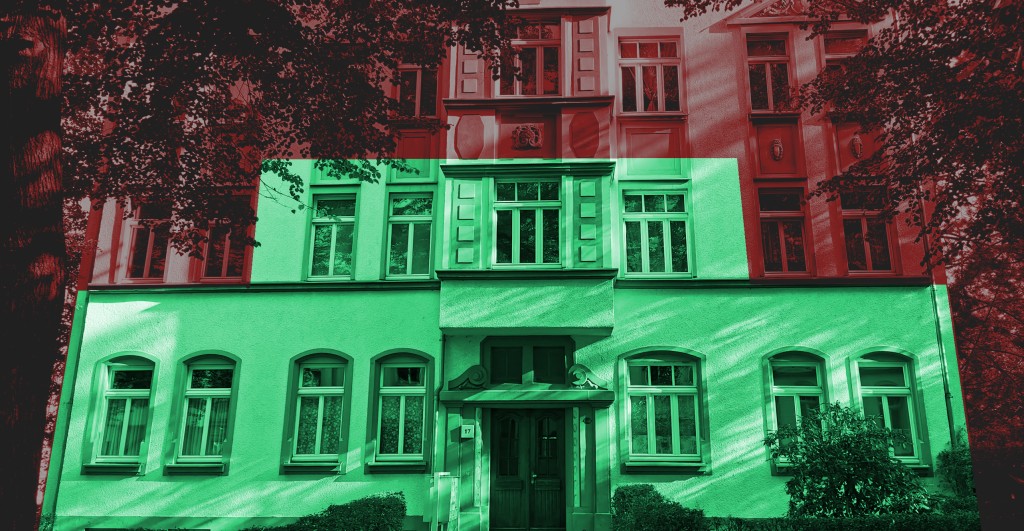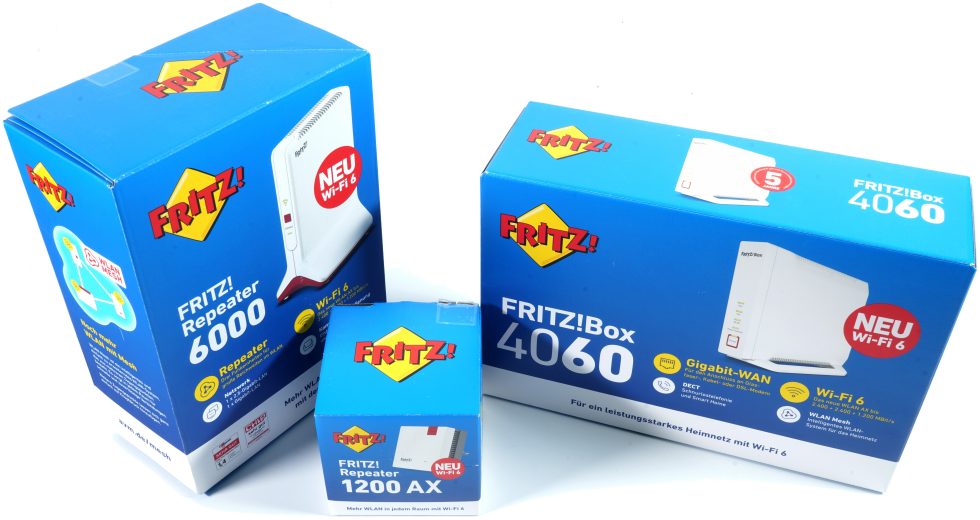Is Wi-Fi 6 now the panacea for poor WLAN reception? No, but it can certainly actively support the therapy. You can’t reinvent physics, but you can harness it. It’s been almost 3 years since I set up a Wi-Fi 5 network over two floors here in the lab and also published a longer article about it. If you’re lucky enough to have a decent Gigabit Internet connection, you don’t want to give this advantage away again just because the technology at home doesn’t play along. Even though I was actually quite satisfied with the previous network after many optimizations, there is always something.
This also includes the fact that more and more Wi-Fi-6 -capable devices are accumulating in the home and laboratory environment over time, be it a current iPhone or iPad Air, the new notebook or motherboards that can transmit on all bands. If you also have your rooms in an old, listed house like I do, you can never have enough new and better things. Especially when it comes to technology. Of course, you can sink an enormous amount of money into this one in particular, which makes it all the more important to proceed in a targeted manner. That’s why I’d like to give you a short, simplified introduction to the requirements you really need to avoid problems with your home network later on.
Important preliminary remark – please read!
Since I already had the case in the circle of acquaintances: It is absolutely useless to buy Wi-Fi-6 capable components like simple repeaters to an existing system and then replace the whole thing piece by piece and expand it further. The most important thing you really always need is either a decent and Wi-Fi-6 capable router, like the FRITZ!Box 4060, or at least a good access point like the FRITZ!Repeater 6000, which you can also use as a real access point for a Wi-Fi 6 network if you connect it via Ethernet to an existing router and configure it accordingly. Without such a base, the new devices are of no use at all and you have only burned money senselessly.
Of course, in the context of the necessary transparency, I do not want to conceal the fact that AVM gave me the FRITZ!Box 6000, the FRITZ!Repeater and the FRITZ!Repeater 1200 AX for the endurance test without preconditions to replace the setup from 2019 at that time and then measure the whole thing comparatively. After first tests and measurements (in order to be able to compare to the old solution with the FRITZ!Box 7590, a FRITZ!Repeater 3000, two FRITZ!Repeaters 2400 to achieve any measurable benefits at all on the upper floor) but a second FRITZ!Repeater 6000 and three FRITZ!Repurchase Repeater 1200 AX. Wi-Fi 6 is therefore not a replacement for poor reception and multiple devices, but only a speed booster. Well, what does just mean…
It is also really counterproductive to integrate old and non-Wi-Fi 6 compatible devices into the new mesh. You should really replace everything, unfortunately. The price of the new solution is significantly higher than the old setup, but those who want to be fast have to suffer, as always. I can already spoil that the tri-band FRITZ!Repeater 6000 was for me the real cream of the crop in the test (when it was fed via Ethernet) and I will also explain that individually in a moment.
Wi-Fi 6 and the different frequency bands
I have already written about the two frequency bands available for a WLAN, but I must briefly go into them again for a better understanding. Because the argument about which is better, the band on 2.4 GHz or the two on 5 GHz, can be answered with a very clear NO, BUT, YES, because we really need all three in the end. And at the same time. However, I don’t want to go too far into the theory of bundling and current standards right now, because the theoretical data is often just fair-weather data that breaks down even with a hyperactive fly in the radio path. But I can’t and won’t spare you a few basics.

If you now take a look at my WLAN cave from the outside, you can already see the problem at first glance. A very old and massive building with 6 floors also means walls like in a bunker (up to 72 cm net thickness on the ground floor). Moreover, after the war around the staircase was built a kind of corset with 500 concrete, and the stairs are a massive concrete-steel structure. Drilling is almost impossible everywhere here, but at least nothing burns if the worst comes to the worst. The ceiling with concrete slabs and double T-beams is a kind of bunker imitation, so it’s death for any WLAN. Well, almost. If you know how to help yourself. And despite all the reconstruction after the war, the (less) nice uncle from the monument protection still lurks around every corner. Just hammering through the stone floor or doors with the Hilti? Unfortunately not possible. So holistic cable fails, unfortunately.
The 2.4 GHz band
The 2.4 GHz band is the older of the two bands and should therefore be able to reach all devices that are roaming around in the wireless network, even the very old ones. However, the advantage, apart from backward compatibility, is solely the higher penetration of walls and ceilings, because the robustness, freedom from interference and the possible throughput are significantly lower here. There are only 3 truly overlap-free channels available and at peak times I see up to 19 (!) competing networks on the display here.
A good router will choose the best channel for itself, but hopping like this doesn’t really have to be purposeful. A manual switch to another channel with the corresponding overlaps would be quite possible, whereby the routers often also take into account the sum of the field strengths, which is not achieved by simply adding up the networks found. For me, the upper positioning proved to be much more trouble-free, despite more nets found.
So it should be clear that no matter how great a long-distance range is, it can’t make you happy on its own. And now?
The 5 GHz band and tri-band operation
Wi-Fi-6 not only expands the limits in the 5 GHz band, for example, by now using two streams in parallel in the lower and middle 5 GHz range (tri-band) in addition to the 2.4 GHz band, but also brings many other innovations. The first thing that stands out is the simplified designations instead of confusing abbreviations. Thus, the whole thing is now simply called Wi-Fi 6 instead of 802.11ax, while the abbreviation 802.11ac is used for the predecessor Wi-Fi 5. This could now be continued at will for Wi-Fi 4, etc. In direct comparison to Wi-Fi 5, the performance has increased, at least on paper. The new standard aims to score points with users by increasing speed by up to 1.5 times. This means that the maximum speed increases to up to 4.8 Gbit/s per client, compared with a maximum of 3.12 Gbit/s for Wi-Fi 5. In practice, if you talk about real net throughput, it should still be at least 5 to 10 percent. In the absolute ideal case, of course.
And what made me decide to go with Wi-Fi 6 for the entire infrastructure after all, other than the fact that there are many useful devices around that already support the new standard? If a particularly large number of end devices are connected to the WLAN, then the new standard can certainly offer a significantly more reliable network connection, simply because larger data streams can be processed simultaneously. You’ll notice this at the latest with Telekom’s Entertain or Netflix when Ultra HD content is accessed and someone (i.e. me) is also streaming in the video studio, monitoring tests via remote desktop or recording the security cameras.
Private or professional? All the advantages compared to the older standards certainly make Wi-Fi 6 extremely attractive for private, but especially for professional or semi-professional use. And you also get more devices integrated at the same time (up to the security technology), which can actively use the network without sidelining each other. Reason for a complete rebuild? Yes, absolutely!
AVM FRITZ!Box 4060 (20002931)
 | Lagernd: Lieferzeit 1-3 Werktage | 217,49 €*Stand: 19.04.24 12:57 |
 | Lieferzeit: 1 Werktag | 220,00 €*Stand: 19.04.24 12:59 |
 | sofort lieferbar | 220,00 €*Stand: 19.04.24 04:48 |
AVM FRITZ!Repeater 6000 (20002908)
 | Lagernd: Lieferzeit 1-3 Werktage | 209,33 €*Stand: 19.04.24 12:57 |
 | Auf Lager, Lieferzeit 1-2 Werktage | 218,99 €*Stand: 19.04.24 12:59 |
 | Versandlager: lagernd, Lieferzeit 1-2 Werktage, 24h Express möglichDornbirn, Graz Nord, Graz Süd, Innsbruck, St. Pölten, Villach, Wien 15, Wien 20, Wr. Neustadt, Zentrale Timelkam: lagerndLinz, Salzburg, Wels: ca. 1 WerktagKlagenfurt, Wörgl: ca. 2 WerktageStand: 19.04.24 12:51 | 219,00 €*Stand: 19.04.24 12:55 |
AVM FRITZ!Repeater 1200 AX (20002974)
 | Lagernd, Lieferzeit 1-3 Werktage | 70,00 €*Stand: 19.04.24 13:00 |
| Berlet.de | Auf Lager - Lieferung in 1-3 Werktagen | 74,99 €*Stand: 19.04.24 12:21 |
| expert TechnoMarkt | sofort versandfertig | 74,99 €*Stand: 19.04.24 12:29 |


































29 Antworten
Kommentar
Lade neue Kommentare
Veteran
Veteran
1
Veteran
Mitglied
Veteran
1
1
Veteran
1
Veteran
Veteran
Mitglied
1
Mitglied
Neuling
1
Veteran
Alle Kommentare lesen unter igor´sLAB Community →